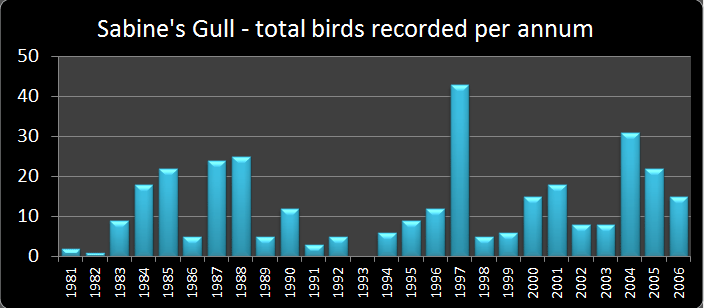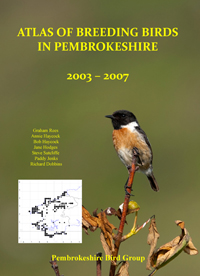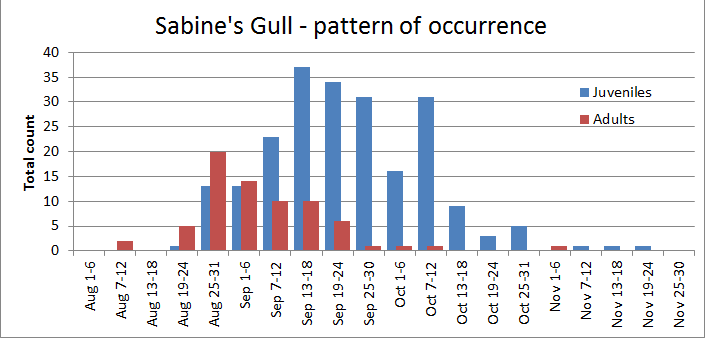Xema sabini
Scarce passage migrant.
The Sabine’s Gull is an Arctic breeding species, with an estimated total population of less than 100,000 pairs. Most breed in Canada and Eastern Russia, with about 100 – 200 pairs in Greenland and sporadic outliers in Spitzbergen.
The east Canadian and Greenland populations cross to the east Atlantic en route to winter as far south as Namibia and western South Africa. Strong winds at this time result in variable numbers passing through inshore waters.
The first to be recorded in Britain was at Milford Haven in the autumn of 1839 and another was recorded near Amroth on the 12th November 1892.The next to be recorded in the county was not until the 11th October 1968 at Skokholm.
Subsequently a total of eight birds were noted between 1970 and 1980, at Skokholm, Newgale, St David’s Head and off Fishguard. Between 1981 and 2006 they were recorded from The Smalls, the Gann, Bluck’s Pool, from the Pembroke to Rosslare ferry, Skomer, Ramsey and the Celtic Deep but principally, 95 % of the total, from Strumble Head.
Total birds per annum.
 Records span the period from the 11th August to the 20th November, the most logged in any year being 43 in 1997, with a highest day total of 12 at Strumble Head on the 13th September 1997.
Records span the period from the 11th August to the 20th November, the most logged in any year being 43 in 1997, with a highest day total of 12 at Strumble Head on the 13th September 1997.
Two birds recorded do not fall within the pattern outlined above, the first being a juvenile feeding among seaweed on a Caldey Island beach on the 16th July 2005. This was remarkably early for a bird of the year to have travelled so far from where it had fledged, possibly climate change resulted in an early start to breeding.
The second was a first winter bird seen at Strumble Head on the 2nd January 1999, flying with Kittiwakes, when its smaller size and unfamiliar plumage pattern attracted observers’ attention
 Wednesday, October 23, 2013 at 9:10AM
Wednesday, October 23, 2013 at 9:10AM  1949 BoP in
1949 BoP in  Sabine's Gull
Sabine's Gull 



